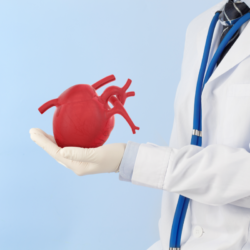Guggul is the name given to a yellowish resin secreted by a small spiny myrrh shrub called Commiphora mukul. Nowadays, it is
it is grown in northern India, where it is highly valued for its use in traditional medicine.
In short, guggul root is mainly used in Ayurvedic medicine as an antibacterial and disinfectant agent. It is also used to regulate cholesterol and to combat obesity, arthritis, urinary disorders, etc. Commiphora mukul resin offers a broad-spectrum treatment. In India, guggul is the preferred treatment for hyperlipidaemia. Since the 1990s, its effectiveness in facilitating lipid combustion has been recognised in Japan and Western countries.
What is guggul?
Guggul, or Commiphora wightii, is a resinous plant found mainly in India, Pakistan and the arid regions of Arabia. This species is famous for its gum-guggul resin, which has been used for thousands of years in Ayurvedic medicine.
This small, thorny shrub generally grows to a height of 1 to 4 metres. It has thin bark that peels off in fine strips, revealing a smooth, pale green surface beneath. Guggul is particularly suited to arid climates and often grows in rocky or sandy soil.
Its small, thin leaves are deciduous. They grow alternately along the branches and take on an oval or elliptical shape. During the dry season, the shrub sheds its leaves to conserve water and energy.
The guggul flowers between November and January. The flowers are small, reddish to pinkish, and cluster together in small clusters. The fruits are capsules containing one to four seeds. They ripen around March, and when ripe, open to release the seeds.
Guggul resin, collected by cutting into the bark, is of great importance in traditional medicine. It is renowned for its anti-inflammatory and cholesterol-lowering properties. In Ayurvedic medicine, it is used to treat a range of ailments, including arthritis, lipid disorders and skin diseases.
Guggul is therefore a multi-faceted plant, valued for its medicinal virtues as much as for its ability to survive in difficult environments. It is still cultivated and used today, reflecting its continuing importance in the region’s medicinal and cultural traditions.
A little history
Guggul, also known as Commiphora wightii, is an aromatic resin extracted from a small tree native to India, Pakistan and North Africa, known as the guggul tree. Its history dates back to antiquity, and it has played a significant role in traditional medicine and the history of the region.
Ayurveda, an ancient Indian medical system, has been using guggul for over 3,000 years. It recognises its medicinal properties and uses it to treat a variety of ailments, including joint problems, heart problems and digestive disorders. Guggul is also considered a blood purifier and general tonic.
Over the centuries, Ayurvedic medicine has fully embraced guggul, documenting its uses and preparation methods in ancient texts such as the Charaka Samhita and the Sushruta Samhita.
In more recent history, guggul has attracted the attention of modern medicine for its alleged health benefits, particularly in the management of cholesterol and inflammatory disorders. Scientific studies have been carried out to assess its effectiveness.
As a result, guggul has a rich and diverse history spanning millennia, from its use in ancient Ayurvedic medicine to its contemporary exploration as a potentially health-promoting dietary supplement.
Guggul root for weight loss
Guggul is thought to help combat obesity by promoting fat burning and suppressing the appetite. One study suggests that it can play a role in weight loss by causing lipids to break down. This helps to reduce the amount of adipose tissue.
Further studies have shown that herbal supplements containing guggul extract can help treat obesity by promoting weight loss and reducing both skinfold thickness and body circumference. Its action can be explained by several mechanisms.
Firstly, guggul stimulates the metabolism. It contains compounds called guggulsterones, which increase thyroid activity. This stimulation leads to an acceleration in basal metabolism, which promotes fat burning and energy.
Secondly, guggul acts on blood lipids. It helps to reduce LDL cholesterol (bad cholesterol) and increase HDL cholesterol (good cholesterol). This regulation of lipids helps to prevent the accumulation of fat in the body.
Thirdly, it has anti-inflammatory properties. Chronic inflammation is often linked to obesity and metabolic disorders. By reducing inflammation, guggul can help to improve the metabolic profile and promote weight loss.
Finally, guggul can have a positive influence on insulin levels. By regulating insulin sensitivity, it helps control blood sugar levels, which is crucial for weight management.
It is important to note that guggul should be used under the supervision of a health professional, especially in the case of pre-existing medical conditions. It should be taken as part of a healthy lifestyle, including a balanced diet and regular exercise.
Action against bad cholesterol and obesity
In 2003, studies reported that this gum increased the secretion of thyroid hormone. In short, this hormone deconstructs proteins, lipids and carbohydrates by combustion. As a result, levels of bad cholesterol, triglycerides and insulin are reduced. In fact, it is thanks to its antioxidant activity that guggul is able to reduce the oxidation of bad cholesterol.
What’s more, it is this antioxidant action combined with its lipid-lowering effect that produces anti-atherogenesis. In other words, this gum prevents lipid plaques from attaching themselves to the artery walls. This is beneficial not only for combating obesity, but also for preventing cardiovascular disease.
At the same time, guggul helps to strengthen the gastric system, promotes the secretion of digestive juices, regulates the appetite and reduces the risk of constipation or indigestion.
Ultimately, accelerating digestion and metabolism, as well as eliminating waste, leads to weight loss.
Does guggul have a beneficial effect on acne?
Several studies have investigated the effects of guggul on acne. In fact, these studies have shown that it is effective as a treatment for severe acne with nodules. What’s more, one study revealed that the efficacy of guggul was comparable to that of tetracycline, an antibiotic normally used to treat acne. Its action against acne is based on several key mechanisms.
Firstly, guggul has significant anti-inflammatory properties. Acne is often associated with skin inflammation due to overproduction of sebum and inappropriate immune responses. Guggul helps to reduce inflammation by inhibiting the release of inflammatory mediators.
In addition, guggul has the ability to regulate sebum production. Acne is often caused by an overproduction of sebum by the sebaceous glands. Guggul can reduce excessive sebum production, helping to prevent the formation of blackheads and pimples.
Guggul also has antibacterial properties. It can inhibit the growth of acne-causing bacteria, particularly Propionibacterium acnes, which proliferates in clogged hair follicles. In addition, guggul can help detoxify the skin by eliminating impurities and toxins that clog pores. As a result, the skin is cleaner and less prone to breakouts.
How should I use guggul?
Studies carried out in India suggest that as part of a slimming regime, doses of 1 to 3 grams a day should be consumed to benefit from its beneficial effects. In fact, doses should be divided into 3 intakes. Guggul is also available in extract, capsule and tablet form.
- Capsules or tablets: The most common form of guggul consumption is in the form of supplements, available in capsules or tablets. These supplements generally contain standardised guggul extracts to ensure a precise dose. It is important to follow the dosage instructions on the packaging or the recommendations of a health professional.
- Guggul powder: Guggul is also available in powder form. This powder can be mixed with water, juice or added to smoothies. Be sure to measure the amount of powder precisely to keep to the recommended doses.
- Tincture of guggul: Tinctures are liquid extracts of guggul. A few drops of guggul tincture can be mixed with water or another liquid for easy administration. Dosages vary, so follow the manufacturer’s recommendations.
- Guggul oil: In aromatherapy, guggul essential oil is applied to the skin after dilution with a carrier oil. This approach focuses on the cutaneous benefits of guggul.
- Culinary use: In certain regions of India, guggul resins are used as a spice in local cooking. However, careful preparation is required to avoid overuse, given its powerful effects on health.
- Consult a health professional: Before beginning any guggul supplementation, it is strongly recommended that you consult a health professional, especially if you are taking other medications or have pre-existing medical conditions.
Warnings
In some people, guggul may cause side effects such as headaches, nausea, diarrhoea, abdominal pain and skin irritation.
If you suffer from thyroid problems, you should consult your doctor before taking this resin for therapeutic purposes. Guggul may have hormonal effects and is not generally recommended for pregnant or breast-feeding women.
Source:
- https://www.ncbi.nlm.nih.gov/pmc/articles/PMC4637499/
- https://www.ncbi.nlm.nih.gov/pmc/articles/PMC6087759/
- https://pubmed.ncbi.nlm.nih.gov/7798429/
- https://ijdvl.com/oral-gugulipid-in-acne-vulgaris-management/
- https://pubmed.ncbi.nlm.nih.gov/25419153/
- https://pubmed.ncbi.nlm.nih.gov/7798429/







